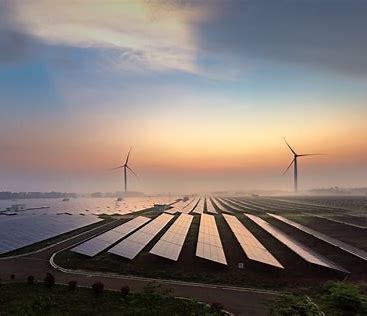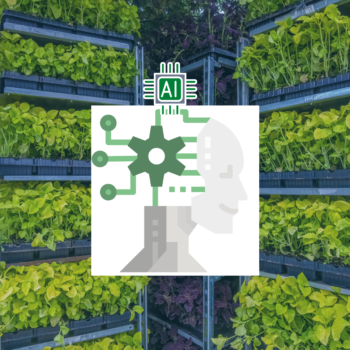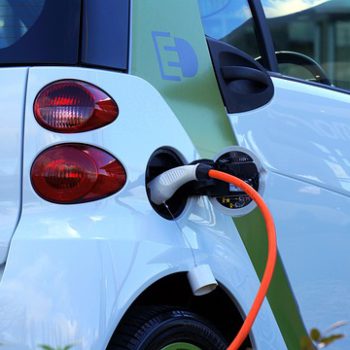|
|
The rapid proliferation of photovoltaics (commonly solar cells) and electric vehicles is occurring at an extraordinary pace. The primary goal for climate protection remains achievable, as indicated by the International Energy Agency (IEA). The effects of climate change are increasingly palpable.
This is evident from the hottest summer period in the history of global measurements, as well as more frequent disasters such as massive forest fires, floods, and hurricanes. Scientists have calculated, for example, that the emergence of a subtropical storm that killed at least tens of thousands of people in Libya was made 50 times more likely due to climate change.
Worse still, it is virtually certain that global warming will exceed the 1.5°C threshold, which climatologists consider relatively safe. To prevent this, CO2 emissions would need to be nearly halved by the end of this decade – yet they are still expected to rise. Therefore, it seems that we will cross the 1.5°C barrier around the year 2030.
However, the global energy transformation gives hope that this exceedance will not be as high and will only be temporary. Why temporary? Because theoretically, by restoring nature’s resources and developing technology, we can capture the “excess” carbon dioxide from the atmosphere. In fact, every scenario in which we stay within the 1.5°C limit by the end of the century assumes this. However, it is much cheaper and safer to reduce emissions now than to rely on the development of uncertain technologies and a lifeline from nature. And the less we heat the Earth, the less we will have to rely on such solutions. In short: prevention is better than cure.
Although we will cross the 1.5°C threshold, it cannot be said that the world is passively watching. Indeed, climate protection actions are still being implemented too slowly, but this situation is beginning to change. In some cases – significantly so.
PV and Electric Vehicles on Track
The vast majority of greenhouse gas emissions are due to how much our economies and lives rely on the use of fossil fuels. The most important thing to do, therefore, is to move away from coal, gas, and oil as quickly as possible. But they need to be replaced with something.
And as the IEA points out, investments in clean energy sources have surged recently.
“Keeping alive the goal of limiting global warming to 1.5 °C requires the world to come together quickly. The good news is we know what we need to do – and how to do it. Our 2023 Net Zero Roadmap, based on the latest data and analysis, shows a path forward,” said IEA Executive Director Fatih Birol. “But we also have a very clear message: Strong international cooperation is crucial to success. Governments need to separate climate from geopolitics, given the scale of the challenge at hand.”

In just two years, the global installed capacity of solar panels has increased by nearly 50 percent. This pace exceeds the needs for limiting global warming to 1.5°C by the end of the century. But that’s not all. Since 2020, the sale of electric vehicles has increased by 240 percent, and the installation of stationary batteries by 200 percent. The growth rate here is also appropriate.

Moreover, the IEA estimates that global production capacities for photovoltaics and batteries for electric vehicles will continue to grow at the right pace by the end of the decade. This will satisfy the demand corresponding to more ambitious climate goals.
This progress is reflected in the cost reductions of key clean energy technologies – photovoltaics, wind turbines, heat pumps, and batteries – which have fallen by nearly 80 percent over the past 13 years.
Is the Path Still Open?
According to the Agency’s “1.5°C pathway,” PV installations and electric vehicles are to account for one-third of the emission reductions by 2030. These are, therefore, key technologies for climate protection.
“In the last two years, the path to achieving the 1.5°C temperature has narrowed, but clean energy technologies keep it open,” comments Fatih Birol, director of the IEA.
The world’s most important energy institution notes that this sector “is changing faster than many people realize,” but there is still much to be done. And time is running out.
As the IEA points out, the stakes are not just about protecting the climate. “The pace of action results not only from efforts to achieve climate goals but also from increasingly strong economic arguments for clean energy, the necessity of energy security, and the job opportunities and industrial possibilities accompanying the new energy economy,” the organization explains.
Example? Following the path outlined by it means that electricity bills in developing countries will fall by 12 percent. In developed economies – including Poland – even more. “However, policymakers must support households, especially those with low incomes, to cover often higher initial costs of clean energy technologies,” the IEA emphasizes.
What to Accelerate?
Good news from the photovoltaic and automotive industries does not mean, however, that the full picture is rosy. To dream of achieving a more ambitious climate goal, it is necessary to maintain the growth pace in these sectors and accelerate in others.
As the IEA lists, the most important actions by 2030 are:
- Tripling the global installed capacity of renewables;
- Doubling the pace of energy efficiency improvements;
- “Rapid increase” in the sales of electric vehicles and heat pumps;
- Reducing methane emissions in the energy sector by 75 percent. These goals, based on proven and often profitable emission reduction technologies, together provide over 80 percent of the reductions needed by the end of the decade. And these are not unrealistic goals.
Existing policies in developed countries and China account for 85 percent of the designated renewable energy capacity needed by the end of the decade.
The pace of heat pump deployment in Europe is more than sufficient, and it is also significantly increasing worldwide.
Meanwhile, reducing methane emissions can be achieved using a laughable 2 percent of the net income of oil and gas companies from 2022. It’s about just 75 billion dollars spent not every year, but in total by 2030.
In addition, only about 1 percent of investment expenditures in the entire energy sector are needed to provide electricity to all 800 million people who still lack it today. And it would be energy from clean sources.
Zero New Drilling, Faster Goals
When the IEA first outlined a global pathway for limiting warming to 1.5°C in 2021, nearly half of the emission reductions by 2050 were to be accounted for by technologies not yet on the market. In the just-updated scenario, they now account for “only” 35 percent of the planned reduction.
Why? In such a short time, many innovations… have already been introduced. For example, the first electric vehicles powered by sodium-ion batteries have recently appeared. They are much more durable than lithium-ion ones, and the sourcing of raw materials does not have such a bad impact on the environment. These vehicles are already at the commercialization stage, which means they will soon begin to be mass-introduced to the market.
The IEA notes that such innovations not only provide more options but also lower the costs of technology.
The institution emphasizes that achieving the path it has outlined means reducing the demand for fossil fuels by 25 percent by 2030 and by 80 percent by 2050. Consequently, no additional oil and gas drilling that would operate in the long term is needed (although some not yet realized short-term projects are permissible). No new coal mines or expansions of existing ones are needed either.
In short: demand can be met without fossil fuels, focusing on clean energy sources and electrification. This is why the IEA has lowered the projected demand for fossil gas in 2050 by as much as half. Separating Climate from Geopolitics Refraining from new mining projects, however, is not enough.
As recent research by Oil Change International shows, to limit the increase in global temperature to 1.5°C, nearly 60 percent of fossil fuels from existing oil and gas fields must remain in the ground. In 2018 it was less than 40 percent, but since then greenhouse gas emissions – instead of decreasing – have continued to rise. According to the IEA, one of the keys to achieving ambitious goals is to tighten international cooperation. “Maintaining the goal of limiting global warming to 1.5°C requires the world to quickly unite. Governments must separate climate from geopolitics, considering the scale of the challenge before them” explains Birol.
Importantly, following the right path means that almost all countries must shorten the time by which they want to achieve climate neutrality. Developed countries should achieve it not in 2050, but already in 2045. Germany has set such a goal, and even faster are Austria and Iceland (2040), but that is far too little. China should take care of climate neutrality not by 2060, as they currently plan, but by the middle of the century.
More our articles about Climate:
How Will Global Energy Change by 2030?
The Agency also informed about the accelerating technological transformation in another report at the end of October. In the World Energy Outlook 2023 report, it indicates that the peak of global demand for coal, oil, and natural gas will occur this decade. And this is based not on loosely thrown promises, but on specific, already binding policies of countries around the world. This situation is happening for the first time in history.
Based on them, the IEA calculated that by 2030:
- Nearly 10 times more electric vehicles will be driving on roads worldwide;
- Photovoltaics will generate more electricity than the entire current U.S. energy system;
- Heat pumps and other electric heating systems will become the most popular source of heating globally, surpassing fossil fuel boilers;
- Investments in new offshore wind energy projects will be three times greater than in new coal and gas power plants;
- And the share of fossil fuels in the global energy supply chain, which has been around 80 percent for decades, will drop to 73 percent. “The transition to clean energy is happening worldwide and cannot be stopped. It’s not a question of ‘if,’ it’s just a question of ‘how quickly’ – and the faster, the better for all of us,” says Fatih Birol of the IEA.
The Great Change is Already Happening
So far, we have warmed the Earth by 1.2°C. Although the actions taken may slightly delay the prospect of crossing the 1.5°C threshold, the laws of physics are relentless: sooner or later, it will happen. The IEA, however, counts on technological innovations to remove excess greenhouse gases from the atmosphere and return below the 1.5°C threshold in the second half of the century.
To achieve this, the world will have to invest nearly 4.5 trillion dollars annually in the transition to cleaner energy from the beginning of the next decade. That’s two and a half times more than the current 1.8 trillion dollars. The change must, therefore, be enormous.
On the other hand, this year global investments in “green” technologies will for the first time in history exceed investments in fossil fuels. And immediately by almost half.
Moreover, thanks to actions implemented since 2015, the increase in global temperature predicted by the IEA at the end of the century has decreased to 2.4°C. That’s a degree less. Something that seemed improbable just a few years ago.
The great change is already happening. The most important unanswered question: will it be faster than the most serious consequences of climate change? “There is a huge and deadly gap between current policy, which leads to a ‘peak’ in fossil fuels by the end of the decade, and the rapid decline in the use of fossil fuels required to stop the climate catastrophe. We cannot solve the climate crisis by adding renewable energy to new fossil fuels – we must quickly replace and phase out all fossil fuels,” concludes Kelly Trout, research director at Oil Change International.
“Transformation without a huge increase in wind and solar energy this decade will mean we get stuck at a midpoint between dependence on fossil fuels and moving away from them,” adds Joyce Lee from the Global Wind Energy Council.












